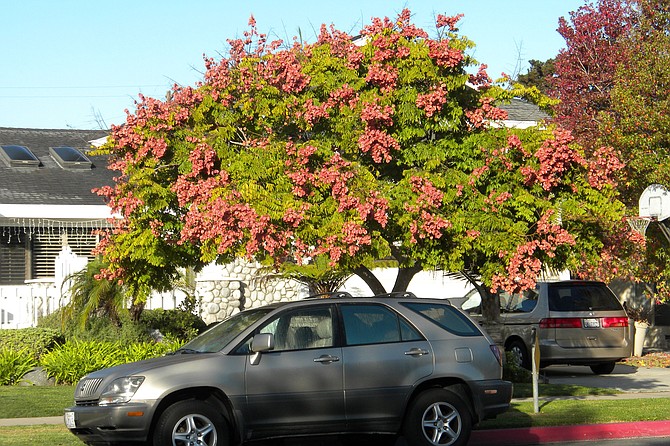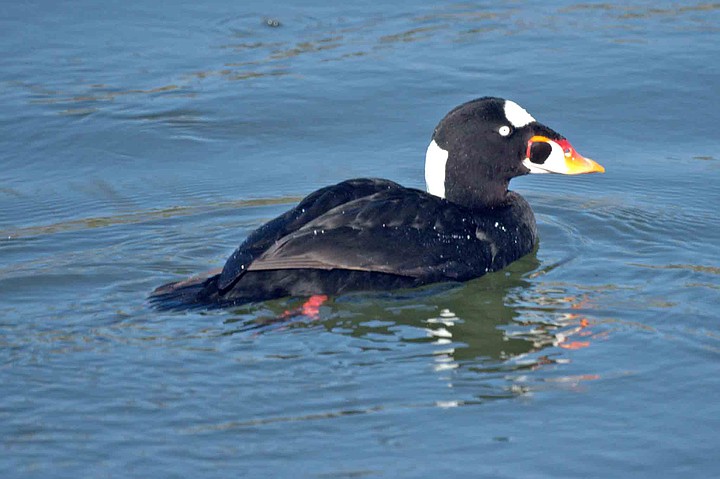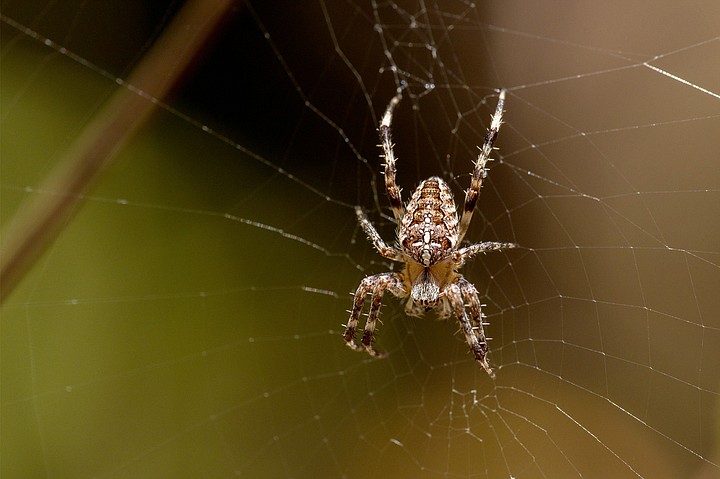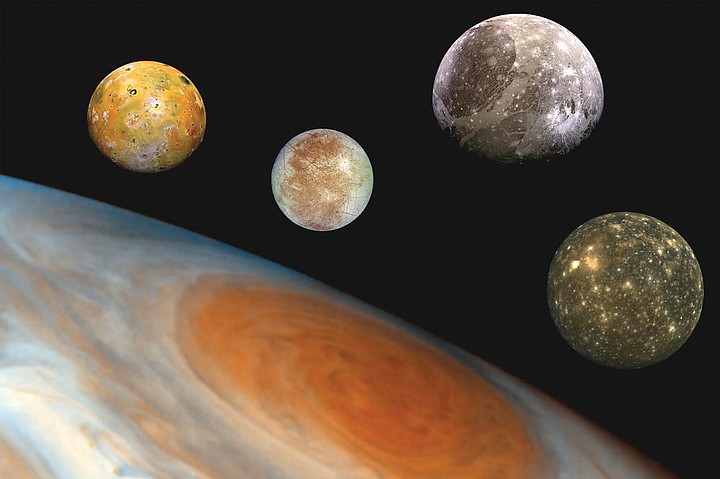 Facebook
Facebook
 X
X
 Instagram
Instagram
 TikTok
TikTok
 Youtube
Youtube

Chinese Flame Trees all over the San Diego region are displaying colorful clusters of orange, reddish, or salmon-pink seed pods. Good specimens line the south end of Balboa Drive in Balboa Park, and Lake Murray Boulevard through San Diego’s San Carlos district. Most of the remainder of San Diego’s ornamental trees will continue to remain drab until November, the onset of “autumn” botanically.

The surf scoter is a small sea duck that typically arrives in Southern California in the fall. By winter, they are the most common bird found in the San Diego Bay. Males are mostly black with a white, orange, and bright yellow bill. Females are slightly smaller and browner. They feed on clams, mussels and other invertebrates by diving more than 30 feet to the sea floor.

It's Orb Weaver spider season if you haven’t already noticed. If you’re over 6 feet tall and enjoy evening walks, you’ve probably “faced” a few webs in recent weeks. Orb Weavers come out evenings and weave big circular webs, which can reach several feet between trees and often span a sidewalk or driveway in residential areas. A well-fed female can be as large as 4 centimeters, but while her brown, yellow, and orange colors might look scary, she rarely bites. If you run into an Orb Weaver’s web, they will usually scuttle away and start building a new one.

Jupiter’s Galilean Satellites, the four largest and brightest moons circling the planet, can be easily observed this month through the end of the year using equipment as simple as firmly supported, high-power binoculars. First observed by Galileo in 1610, these satellites noticeably change their configuration from night to night as they swing around the planet. First, of course, you must locate the planet itself. Jupiter is the brightest star-like object in the evening sky, located high above the east horizon on October evenings and shifting toward the southern sky by December.


Chinese Flame Trees all over the San Diego region are displaying colorful clusters of orange, reddish, or salmon-pink seed pods. Good specimens line the south end of Balboa Drive in Balboa Park, and Lake Murray Boulevard through San Diego’s San Carlos district. Most of the remainder of San Diego’s ornamental trees will continue to remain drab until November, the onset of “autumn” botanically.

The surf scoter is a small sea duck that typically arrives in Southern California in the fall. By winter, they are the most common bird found in the San Diego Bay. Males are mostly black with a white, orange, and bright yellow bill. Females are slightly smaller and browner. They feed on clams, mussels and other invertebrates by diving more than 30 feet to the sea floor.

It's Orb Weaver spider season if you haven’t already noticed. If you’re over 6 feet tall and enjoy evening walks, you’ve probably “faced” a few webs in recent weeks. Orb Weavers come out evenings and weave big circular webs, which can reach several feet between trees and often span a sidewalk or driveway in residential areas. A well-fed female can be as large as 4 centimeters, but while her brown, yellow, and orange colors might look scary, she rarely bites. If you run into an Orb Weaver’s web, they will usually scuttle away and start building a new one.

Jupiter’s Galilean Satellites, the four largest and brightest moons circling the planet, can be easily observed this month through the end of the year using equipment as simple as firmly supported, high-power binoculars. First observed by Galileo in 1610, these satellites noticeably change their configuration from night to night as they swing around the planet. First, of course, you must locate the planet itself. Jupiter is the brightest star-like object in the evening sky, located high above the east horizon on October evenings and shifting toward the southern sky by December.
Comments